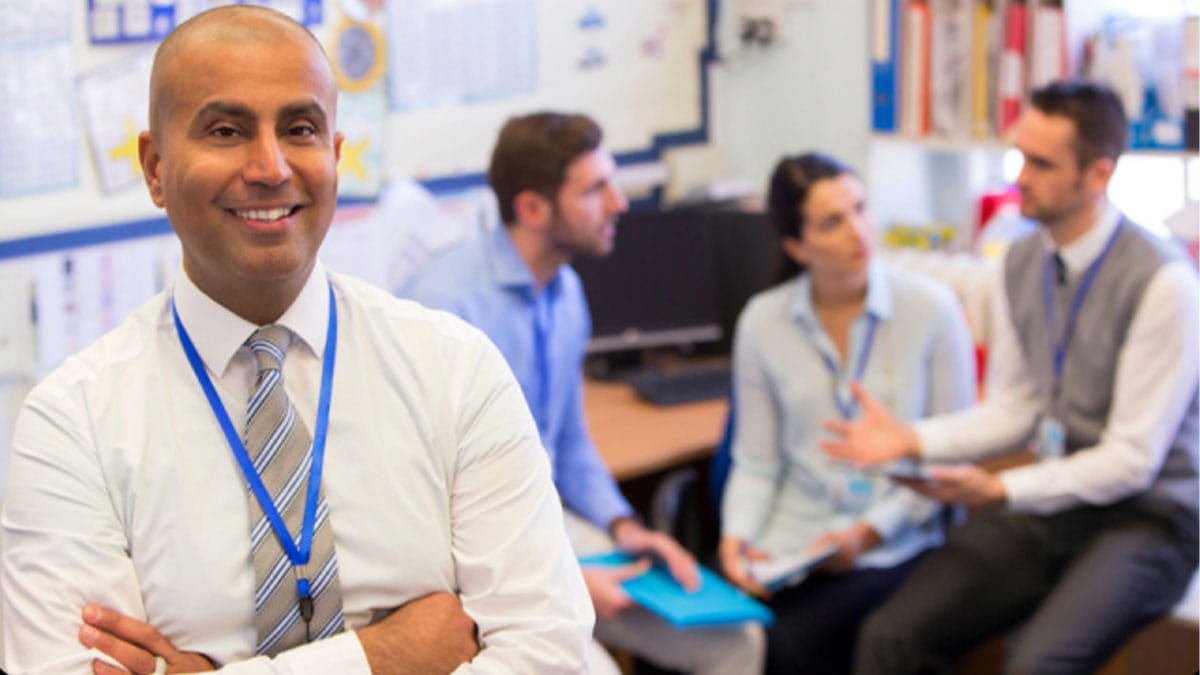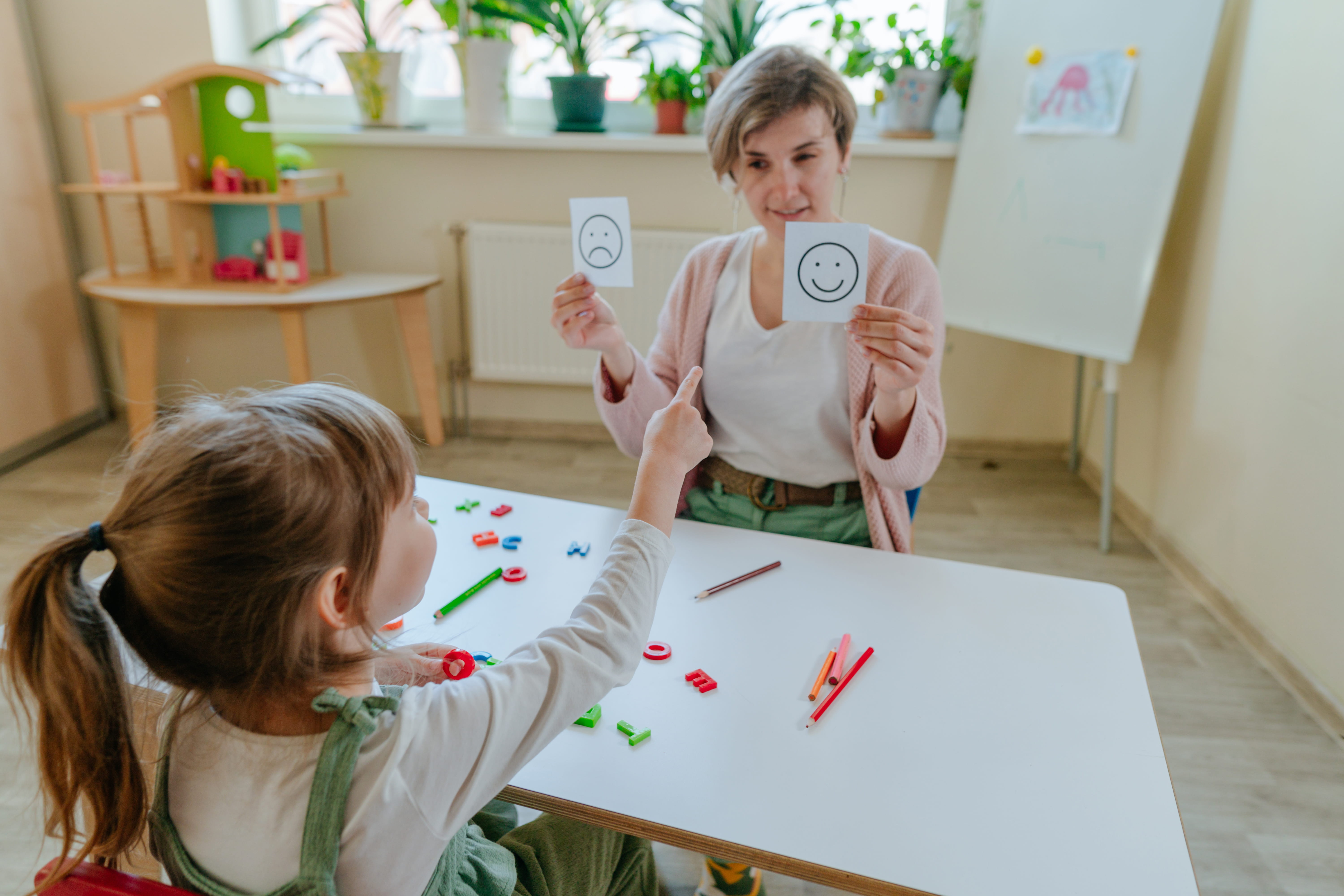Schools and districts are increasingly adopting the tenets of social-emotional learning (SEL) to help students thrive by becoming more adaptable to challenges and change. In this eight-part series, we examine how SEL can be incorporated in the classroom and how EdTech can help.
First, in this article, we take a holistic look at SEL. Then we dive into five SEL competencies: self-efficacy and self-awareness; social-emotional awareness; identity and emotional awareness; social awareness and collaboration; and critical thinking. We finish by exploring the importance of student mental health and how to create a culturally responsive classroom.
Read on as we review the basics of SEL and how it can be implemented in the classroom and beyond.
As schools navigate a thicket of newly identified changes in student wellbeing, educators are embracing social-emotional learning in the classroom to foster a robust learning environment. Here’s what educators should know about the power of SEL and how to incorporate it in the classroom.
What is social-emotional learning?
While SEL is often associated with mental health, the two are different. One way to separate them is to think of mental health as being more “inward focused” — that is, tied to how students are processing events internally. By contrast, SEL can be considered “outward focused,” with competencies that form the foundation of how we interact with the people around us and how we adapt to different situations. SEL helps students acquire skills and attitudes that allow them to develop a strong sense of identity, create nurturing and empathetic relationships, and work to achieve personal goals.
As a holistic approach to learning, SEL isn’t taught independently of other subjects. Instead, it should be considered as a framework that’s woven into everyday learning to give students tools to understand themselves better and how to engage with others and the world around them.
There are several models for SEL. Harvard University’s EASEL Lab offers information about a host of widely adopted frameworks and shares a tool that allows you to compare how the different models address basic SEL principles.
One of the most prominent models is the “CASEL wheel,” developed by the Collaborative for Academic, Social, and Emotional Learning, that identifies five broad areas of competence. Many frameworks, including CASEL’s, extend beyond SEL in the classroom to recognize the importance of infusing SEL in all aspects of life. This includes practicing SEL with families, caregivers, and even the larger school-adjacent community. Each of these influencers on students’ lives reaffirms the role of SEL in building traits that help to give students a broader and more resilient perspective.
Understanding the benefits of SEL
A body of research underscores the value of social-emotional learning in the classroom to effectively support wellbeing. This includes promoting curiosity, goal-setting, and effective problem-solving, along with improving academic outcomes.
Students with better social and emotional skills are more likely to achieve higher grades, even when factors such as social status, gender, and cognitive abilities are accounted for, according to the Organization for Economic Cooperation and Development, which conducted an international comparative assessment of student social-emotional development.
As the report points out, SEL traits aren’t fixed and they can be boosted throughout life, which explains why social-emotional learning in the classroom is so critical.
“When students perceive that they are treated in a fair way, when the school and its staff help students develop a sense of belonging, when they provide for a disciplined, structured and co-operative environment, when the environment is supportive and less punitive, students’ social and emotional skills develop better and they are less likely to engage in violent and negative interactions,” explains Andreas Schleicher, director of the OECD’s Directorate for Education and Skills, in a summary of the report.
While the OECD report reveals the importance of SEL prior to the pandemic, the need may be even more acute today as students and educators grapple with a new set of dynamics.
SEL competencies defined
While there are numerous frameworks for grouping SEL competencies, the following list highlights three key focus areas.
Identity, self-awareness, and self-efficacy
Identity is the way we define ourselves, and it takes many internal and external factors into account. In relation to SEL, this focus area includes self-awareness, referring to a student's understanding of themselves, and self-efficacy, which is the belief they can organize and execute the actions needed to reach a goal.
When students are allowed to bring and express all areas of their identity in the classroom, they feel a sense of safety and security that helps them develop the persistence necessary to work through challenging academic and personal situations. Seeing their peers and teachers do the same enables them to develop a broader worldview that nurtures empathy for others. They’re also able to learn responsible decision-making, including evaluating the benefits and consequences of various choices and their effects on the classroom.
Social-emotional awareness
This area includes self-management and emotional expression, and how they come together to help students establish strong relationships with others. Today's students may need more practice than ever in these skills, given the lack of in-person peer interaction many experienced during the pandemic. Understanding verbal and non-verbal cues and developing a sense of empathy are key elements of this awareness.
Social-emotional awareness is critical when setting personal and group goals. Doing so requires developing and using organizational skills for planning, along with building self-discipline and motivation. By boosting their collaboration skills, students learn to work together toward a goal, ultimately realizing that there is more than one way to solve a problem.
Critical thinking
Rather than statically consuming content, critical thinking teaches students to be lifelong learners and problem solvers. Boosting this skill involves encouraging students to consider the point of view and potential validity of information, ask questions to gather new or additional information or opinions, and suggest different ideas, all of which lead to deeper thinking. This type of interaction helps shift the way students learn from consumption to creation.
Setting SEL priorities in the classroom and beyond
Today’s educators are stretched more than ever, which is why it’s important to consider how to include social-emotional learning in everyday learning. Any subject offers an entry point to create a lesson that connects learning to the community to help build SEL competencies. For example, SEL can be incorporated into a math lesson by discussing price increases of household staples. Or it could be worked into a language lesson by encouraging students to use their choice and voice to express themselves and share their learning in their preferred medium.
SEL principles become part of the larger classroom community as teachers encourage students to set goals together and design inclusive classroom guidelines.
EdTech can play a key role in achieving these goals. Consider Lumio, which is a collaborative workspace tool that promotes group work. Activities within the tool like Shout it Out allow students to participate in attributed or anonymous brainstorming to encourage the sharing of diverse viewpoints and opinions to build classroom conversation. Game-based activities engage students while offering the immediate feedback necessary to evaluate future options.
Using EdTech with collaborative functionalities naturally ingrains SEL principles so they become an organic part of academic instruction, helping students develop SEL traits that will help them flourish.
Similarly, SEL should involve families and caregivers, too. Educators can play a role in communicating the benefits of SEL to help dispel myths about the framework and help caregivers better understand its attributes. The good news is that families almost unanimously agree with the intent of SEL activities, according to a report from the Fordham Institute. For example, more than 90% of parents supported SEL-related skills like setting goals and working toward achieving them; as well as helping students approach challenges in a positive, optimistic way; and believing in themselves and their abilities.
SEL is grounded in partnering with our parents,” said Aaliyah Samuel, CASEL’s president and CEO, in a webinar describing the current state of SEL. “We need to recognize that parents are children’s first teachers. They need to be at the forefront of this work.” Letting parents know that SEL is an ‘and’ not an ‘or’ when it comes to developing skills in areas like math and literacy as well as sharing examples of how social-emotional learning in the classroom is embedded in existing activities can help bolster support and gain buy-in.
Using SEL to help students thrive
Helping students master social-emotional skills is critical to empowering them to overcome the immediate challenges in their personal lives and it sets them on a path of lifelong learning. Although the stakes are high, implementing SEL in the classroom doesn’t have to be complicated. And the good news is, many activities educators already do with students are considered SEL work. For example:
- Having students work in a group to solve a problem, and then share with the class and/or instructor the steps they took to get their answer.
- Encouraging students to share special skills or knowledge they’ve developed outside the classroom with their peers during the school day.
- Giving students space to try again to solve a problem they didn’t answer correctly the first time.
Looking for SEL lessons and activities that are simple to integrate into the classroom? Check out SMART’s library of free resources to support SEL and wellbeing, available here.
SEL should be considered as a framework that’s woven into everyday learning to give students tools to understand themselves better and how to engage with others and the world around them.



